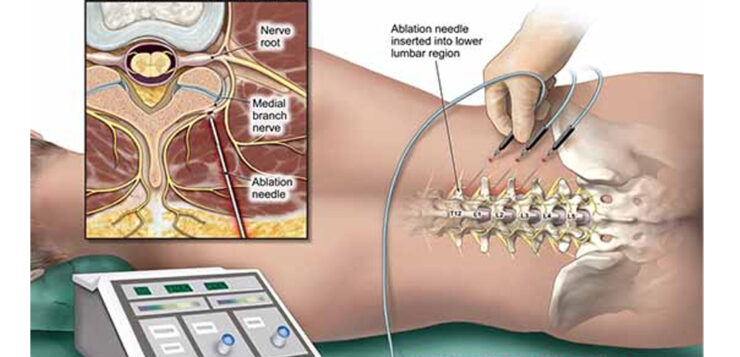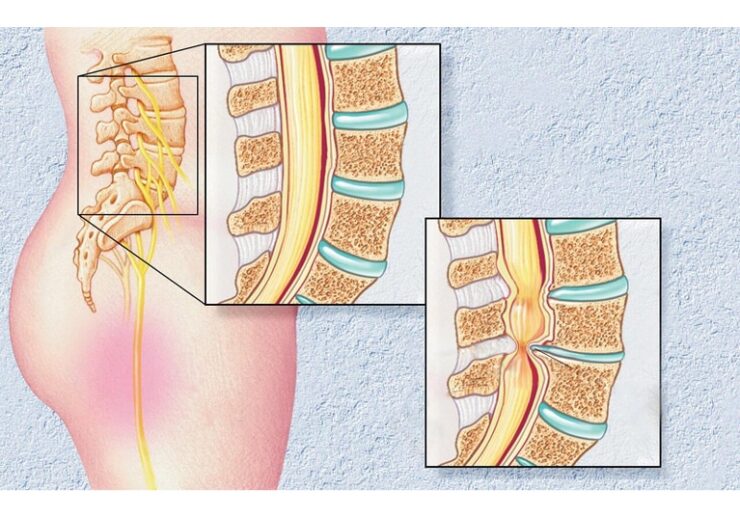At the heart of back discomfort lies the spine, the bony conduit harboring the delicate nervous system that communicates life’s sensations to the brain. Sometimes, however, the spine itself becomes the messenger of distress. Lumbar spinal stenosis, a condition where the spinal canal narrows in the lower back, compressing the nerves and triggering an array of symptoms, is one such messenger. Aging is a primary catalyst, with gradual wear and tear leading to conditions like osteoarthritis, herniated discs, and thickened ligaments. However, some individuals may have a congenitally narrow spinal canal or develop this condition due to tumors or spinal injuries.
Minimally Invasive Approaches to Lumbar Spinal Stenosis Treatment
Historically, the specter of invasive surgery loomed large over lumbar spinal stenosis treatment. However, medical advances have given rise to minimally invasive approaches to clinics that offer the promise of relief with reduced recovery times and lower complication risks. These techniques, employing smaller incisions and specialized instruments, cause less damage to the surrounding tissues, leading to faster healing and less post-operative pain.
One such option is Minimally Invasive Lumbar Decompression (MILD). This procedure, performed under local anesthesia, involves a tiny incision through which excess ligament tissue causing the stenosis is removed. This technique does not require any implants, reduces pressure on the nerves, and restores space in the spinal canal, relieving symptoms.
Another alternative is the Minimally Invasive Stabilization (MIS) procedure, which fuses the affected vertebrae to restrict movement and alleviate nerve pressure. This is achieved by inserting a bone graft or an implant to facilitate the fusion of the bones, often supported by screws or rods for stability. The goal is to offer long-term pain relief and functional improvement with less surgical trauma.
Percutaneous Interventions: A Promising Solution for Lumbar Spinal Stenosis

Percutaneous interventions, such as percutaneous image-guided lumbar decompression (PILD), represent another promising minimally invasive approach to lumbar spinal stenosis treatment. Utilizing live X-ray guidance (fluoroscopy), these procedures enable the removal of tissue causing nerve compression with utmost precision and minimum collateral damage.
PILD is typically recommended for those with lumbar spinal stenosis resulting from thickened ligamentum flavum, a ligament that helps stabilize the spine. The surgeon accesses the ligament through a small skin incision and a specialized tube, decompressing the spinal canal without the need for general anesthesia or implants.
The appeal of percutaneous interventions is their reduced invasiveness. They cause minimal tissue damage, and patients usually experience less post-operative pain and faster recovery times compared to traditional open surgery. Additionally, these procedures can often be performed as outpatient surgeries, further reducing the burden on the patient.
Exploring Endoscopic Techniques for Lumbar Spinal Stenosis Relief
In the continuing quest for less invasive therapeutic options, endoscopic techniques have emerged as a viable solution. Endoscopic spine surgery uses an endoscope—a thin, flexible tube with a light and camera—to visualize and access the affected area. This allows for targeted treatment with minimal disruption to the surrounding tissues.
Endoscopic lumbar decompression involves the removal of the tissue causing stenosis through a tiny incision. Specialized instruments are used to cut away bone or soft tissue compressing the nerves, while the surgeon monitors the procedure on a video screen. This meticulous approach results in less postoperative discomfort and a quicker return to normal activities.
Endoscopic fusion surgery, another option, is recommended for cases with spinal instability. It involves a similar approach but includes the fusion of affected vertebrae using a bone graft or implant. While the procedure is more complex, it still results in less tissue damage and quicker recovery compared to traditional fusion surgery.
Radiofrequency Ablation for Lumbar Spinal Stenosis: An Alternative Treatment Option

Radiofrequency ablation (RFA) presents a unique alternative for lumbar spinal stenosis patients, particularly those for whom surgical interventions might pose a significant risk. RFA uses heat generated by radio waves to disrupt nerve function, thus reducing pain signals. The procedure is performed using a needle inserted through the skin and guided to the appropriate nerves using imaging technology.
There are two types of RFA for lumbar spinal stenosis: conventional and cooled. Conventional RFA targets specific nerves responsible for transmitting pain, while cooled RFA can treat a larger area and may be more suitable for complex cases. Both types offer significant pain relief, often lasting for months.
While RFA does not address the root cause of stenosis, it is a minimally invasive technique that can significantly improve the quality of life for patients who may not be suitable candidates for surgery or for those seeking respite from chronic pain while exploring more definitive treatment options.
Benefits and Risks of Minimally Invasive Treatments for Lumbar Spinal Stenosis
Minimally invasive treatments for lumbar spinal stenosis are gaining recognition for their compelling benefits. They typically involve smaller incisions, less blood loss, reduced post-operative pain, and shorter hospital stays. Faster recovery times often mean that patients can resume their daily activities more quickly. Moreover, the precision of these techniques often translates to fewer complications and better outcomes.
However, these procedures are not without risks. Potential complications include infection, nerve damage, and spinal instability. Some patients might not experience the desired pain relief, and in some cases, the condition might worsen. It’s also worth noting that while these techniques can be very effective, they may not be suitable for all patients. The choice of treatment depends on various factors including the cause and severity of stenosis, the patient’s overall health, and the presence of any co-existing conditions.
The Impact of Lumbar Spinal Stenosis on Quality of Life

Living with lumbar spinal stenosis can dramatically impact an individual’s quality of life. Physical discomfort often metamorphoses into an invisible emotional burden, blurring the line between physical and psychological health. The constant, nagging pain can impede basic daily activities such as walking or even standing, restricting mobility and breeding a sense of helplessness. The inability to lead a normal, active life can lead to frustration and despondency, setting the stage for mental health issues like depression and anxiety.
Additionally, lumbar spinal stenosis can hamper social interaction. Reduced mobility may result in increased isolation, particularly in older adults who might already be grappling with loneliness. The condition could also instigate early retirement or restrict employment options for those still within working age, leading to financial strain. A study in the “Spine” journal underscored this, showing how lumbar spinal stenosis patients reported lower life satisfaction and heightened psychological distress compared to their healthy counterparts.
What often goes unsaid is the ripple effect this condition can have on caregivers. They too can experience emotional exhaustion and financial concerns. Balancing the patient’s care needs with their personal responsibilities can be challenging, reinforcing the call for effective treatment strategies to restore not just the patient’s, but also the caregiver’s quality of life.
Conclusion
In the pursuit of managing lumbar spinal stenosis, choosing the right treatment partner is paramount. Vertos Medical is a trailblazer in minimally invasive treatments for lumbar spinal stenosis, dedicated to enhancing the quality of life for those suffering from this condition. They are the pioneers behind the Mild® procedure, a promising and less invasive solution that’s transforming the landscape of stenosis treatment.
At Vertos Medical, patients are not just treated, but understood, guided, and empowered through their journey to recovery. With their state-of-the-art techniques, the company aims to reduce the burdens of traditional open surgeries, promoting quicker recovery times, less post-operative pain, and an overall better patient experience. Their dedication to research, development, and clinical training fosters continuous innovation and improvement in lumbar spinal stenosis treatment.
As we advance in our understanding and management of lumbar spinal stenosis, the goal remains unchanged: to offer relief and restore quality of life with minimal intervention. These minimally invasive treatments, each with their own promise and potential, pave the way towards that goal, offering a beacon of hope for those caught in the grip of this debilitating condition.

